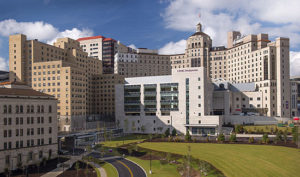The sense that help is on the way also spread through American households in the mid-1950s.
The current effort to vaccinate citizens against the COVID-19 virus rings bells for people my age, some of whom became the first to receive the Salk polio vaccine in 1954. Recent stories celebrating the apparent success of the new drugs are a reminder of the maelstrom of parental dread about polio that few children probably understood. To be sure, my eight-year-old self was particularly clueless to the risks of being around other kids, or going to parties or swimming pools where the paralyzing disease could attack. Back then, the habit of many parents was to worry alone about the risk of a paralysis that could immobilize their children. Those conversations were mostly saved for other parents. Anyway, kids have a natural habit of living in their own world. Then it was music, radio and bicycles. If we were skating on thin ice as potential victims of a disease, we were only dimly aware of it.
What a contrast with the current pendemic. Our more invasive media mean that there is no such shielding of children from the worries and disruptions of the virus. COVID-19 is their crisis as well. As is often true with kids, many are handling it better than the rest of us.
The current sense that help is on the way similarly spread through American households in the 1950s. Jonas Salk at the University of Pittsburgh in the Oakland section of the city led a team that found a workable vaccine. All that was left was to manufacture and distribute it, but in reverse order of today’s vaccine roll out. Kids went first because they were most at risk.
Like many others, my third-grade class at Ashley Elementary School would be among the first “polio pioneers,” having volunteered in true Ashley fashion by doing what we were told. It was not that big a deal to get the shot. And there is no doubt the Salk and later Sabin vaccines saved millions from paralysis, withered limbs and leg braces.
The subject didn’t surface in my still unfocused brain until junior high, when I could no long make my legs flexible enough to run. I was stiff most of the time, choosing activities that did not require speed or agility. I warmed the bench in little league, put on weight from too many visits to the Dairy Queen, and preferred to roam surrounding neighborhoods on my bicycle. Only after a checkup, did our family doctor begin to wonder about my stiffness. The most probable cause: the dose of vaccine given to me may have contained some of the virus that had not been fully neutralized. Some minimal physical therapy took place in Denver’s children’s hospital. But the best recommendation was to have me join the track team at my tiny high school when my family moved to the nearby mountains. I was on the team not to compete, but to get back to level of mobility comparable to my peers. It was a chore, since my speed was only slightly better than an enormous shot putter who joined the group for fun. The two of us inadvertently reenacted “The Little Engine that Could” on every slope.
I would not say I had polio. Even while it may have been the cause of my symptoms, the vaccine surely spared me the full effects of the disease. If anything, over the years the Salk Vaccine made me a stronger believer in the power of childhood vaccination. Watching a recreation of F.D.R.’s struggle with polio was the tipping point for a degree of self-awareness. His legs were so sapped of energy that he was carried like a child when he had to be moved to places that were beyond the reach of his wheelchair. Viewing the film as a high school senior, I began to realize that I had perhaps skated closer to the edge than I knew.

Sixteen years later I began a graduate program at the University of Pittsburgh, trekking daily from my apartment on Craft Avenue up to the University about five blocks north. In my daily walks to the center of campus, I never failed to be in awe of the sprawling medical and public health campuses of the University of Pittsburgh Medical Center, their massive structures made even taller as they marched up the steep hillside above Fifth Avenue. UMPC is how God would want a vast medical complex to look like. It was enough to always remember that this is the spot where my childhood was given both a medical challenge and reprieve. To this day the geography of Pittsburgh is still my reference point for thinking about how dedicated researchers can suddenly tame a terrible disease.
![]()


